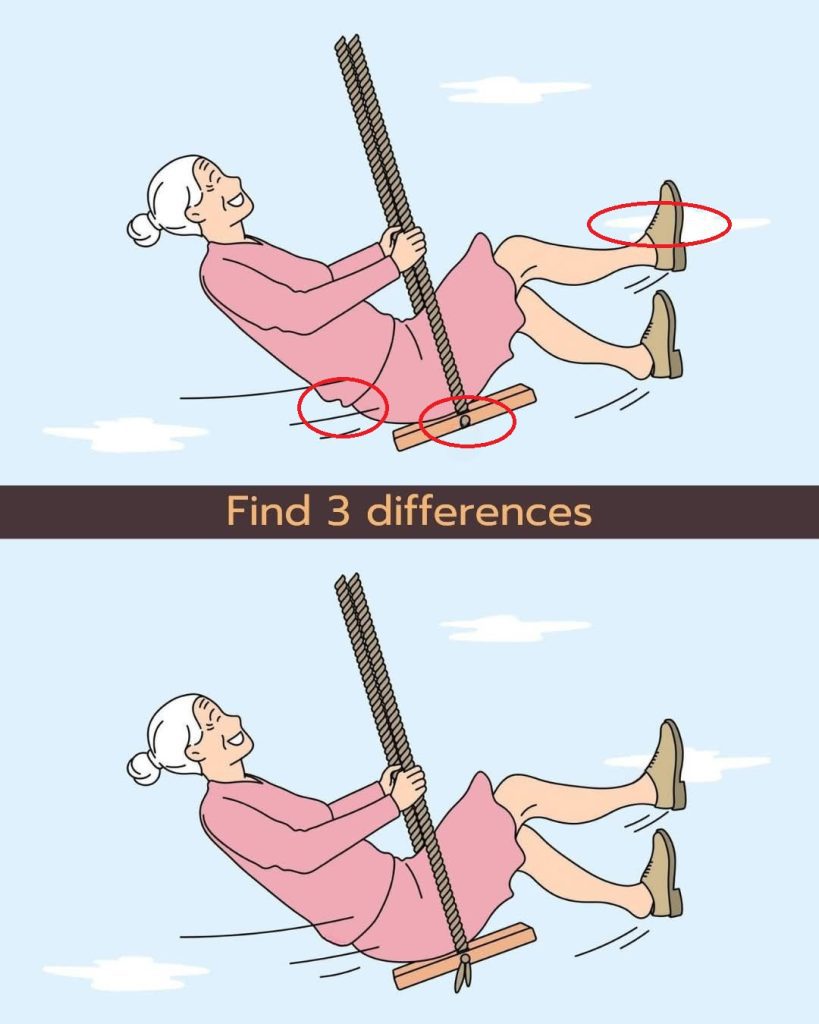In today’s rush, where we’re glued to screens, really seeing details is a lost art. That’s why spot-the-difference puzzles, like the “Swinging Grandma,” are so special. They challenge you to find three tiny differences between two images of a happy grandma on a swing. At first, the pictures look the same, but they hide clever changes that test your focus. These puzzles aren’t just fun—they’re a great way to train your brain to notice what’s right in front of you.
Your brain often assumes two similar images are identical, glossing over small differences. To outsmart it, slow down and scan carefully. Start with grandma and her swing, then check the background, like clouds or sky, and finally look at details like her clothes or the swing’s ropes. This approach helps you spot what’s off. One difference is at the swing’s seat, where the ropes connect. In one image, a small black bolt anchors them, making it look real. In the other, the bolt is missing, and the swing feels less secure.
Another difference is a cloud near grandma’s raised foot. In one image, it’s round and fluffy, like a soft cloud. In the other, it’s long and flat, almost smeared. You might assume it’s the same because it’s in the same place, but its shape tells a different story. The third difference is in grandma’s dress, near her hip. One image has a fold that shows movement, as if she’s swinging. In the other, the fold is gone, leaving the dress flat and still.

These tiny details—a bolt, a cloud’s shape, a dress fold—seem small but matter. They make the puzzle engaging and help you practice focus and pattern recognition. These skills are useful for tasks like checking work or noticing your surroundings. The “Swinging Grandma” puzzle invites you to slow down and look again. Whether you spot all three differences or not, you’re sharpening your mind, learning to catch the little things that others might overlook.


